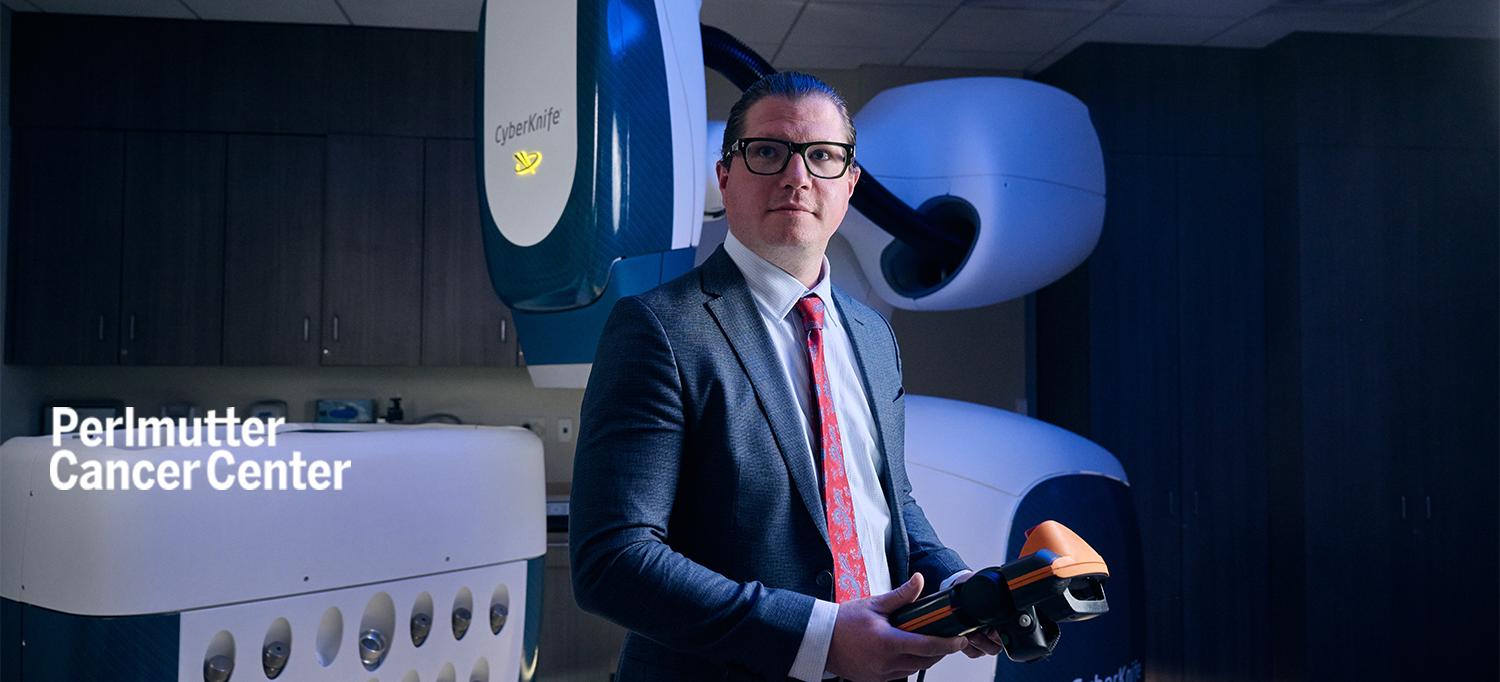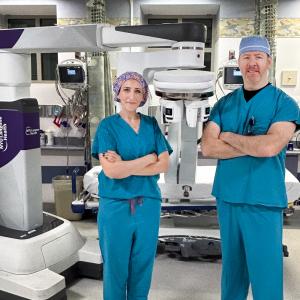
Radiation oncologist Dr. Jonathan W. Lischalk aims to use a tumor’s genetics to tailor treatment.
Photo: Joe Carrotta
Definitive radiation therapy is one of several curative approaches, in addition to surgery and other ablative therapies, for localized prostate cancer. Radiation oncologists at NYU Langone Health’s Perlmutter Cancer Center have pioneered a modern approach to treat prostate cancer using stereotactic body radiation therapy (SBRT), which allows highly precise doses of radiation to be delivered with exquisite tracking. This technology allows radiation treatment to be delivered in as little as a week, rather than the historical nine weeks.
A recently launched phase 1/1B clinical study, led by Jonathan W. Lischalk, MD, medical director at NYCyberKnife at Perlmutter Cancer Center—Manhattan, aims to use genetic information about an individual’s tumor to personalize treatment and deliver the requisite dosage of radiation, which is guided to the visible tumor using advanced imaging and delivered over the course of two treatments.
“Our study combines genetic profiling of the individual’s tumor with imaging using MRI scans. From the cancer’s DNA, we can assess whether the patient is low, intermediate, or high risk, and using that information we can direct the appropriate dose of radiation to specific areas of concern that we identify on the MRI scan,” said Dr. Lischalk, who is also an assistant professor in the Department of Radiation Oncology at NYU Grossman Long Island School of Medicine and director of research for that department at Perlmutter Cancer Center at NYU Langone Hospital—Long Island.
In 2005, radiation oncologists at Perlmutter Cancer Center on Long Island became the first in the New York metropolitan area to offer a robotic SBRT technology called CyberKnife as a treatment option for prostate cancer. CyberKnife, like other SBRT systems, enables radiation oncologists to deliver precise doses of radiation with submillimeter accuracy, focusing the treatment on the tumor cells and sparing surrounding healthy tissue. CyberKnife is the only SBRT system capable of tracking and automatically correcting for target motion in real time, even while the tumor moves.
Receiving five radiation treatments with SBRT has become one of the standards of care throughout the United States and the rest of the world for people with localized prostate cancer who are not high risk, Dr. Lischalk said. The two-fraction study, which is only offered at two CyberKnife Center locations, in Manhattan and at Perlmutter Cancer Center on Long Island, is open to people with low- to intermediate-risk prostate cancer.
Biopsy specimens from the patient’s tumor will be sent to an independent lab to identify changes in either the genetic or epigenetic profile of that patient’s cancer DNA. The profile is then compared to a library of genetic or epigenetic signatures that indicate how aggressive the cancer is, which enables the researchers to make clinical judgments about how much radiation to use.
Alongside using the tumor’s genetic profile to personalize the treatment, the study uses MRI imaging to identify specific locations within the patient’s prostate to direct increased radiation doses to eliminate the tumor. In addition to being physically easier for patients, the two-fraction protocol should also help ease the financial burden of prostate cancer treatment, which in the past required up to 44 treatments on a Monday through Friday schedule, Dr. Lischalk said.
“Studies have shown that having nine weeks of radiation therapy is the most financially burdensome of any type of treatment for prostate cancer,” Dr. Lischalk said. “We’re trying to reduce that burden by moving people into a shorter course of treatment while simultaneously genetically and radiologically personalizing cancer care using a treatment technique pioneered here at NYU Langone.”

